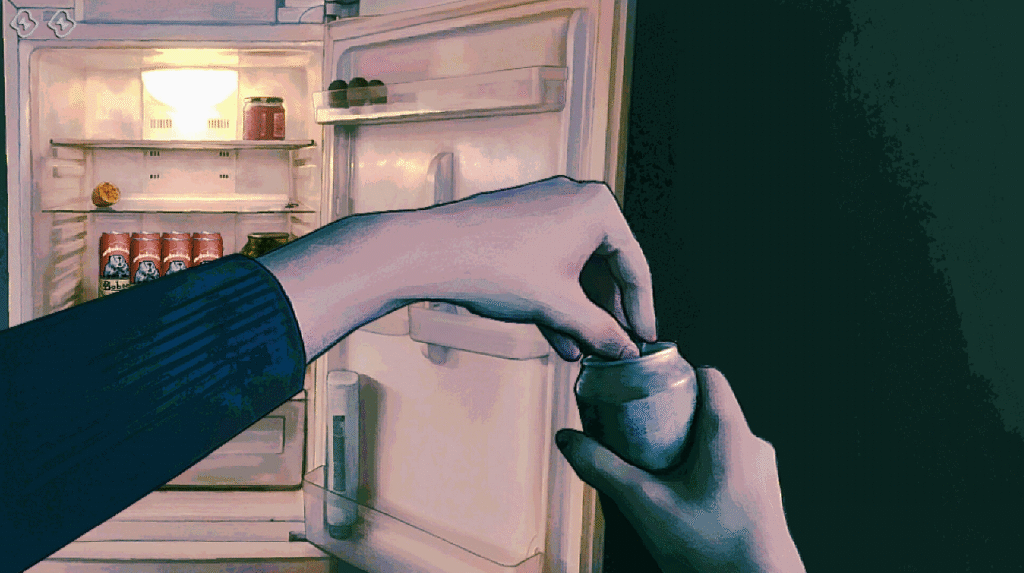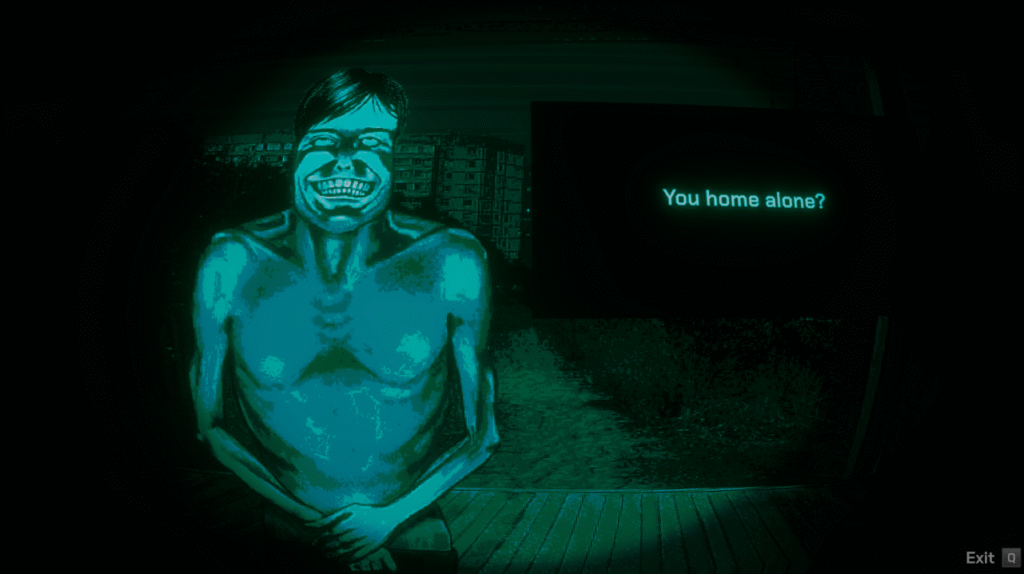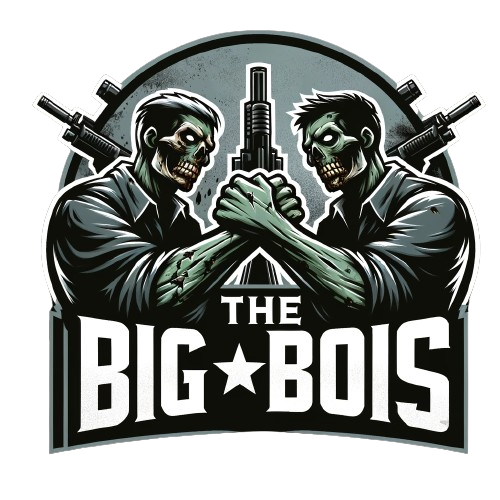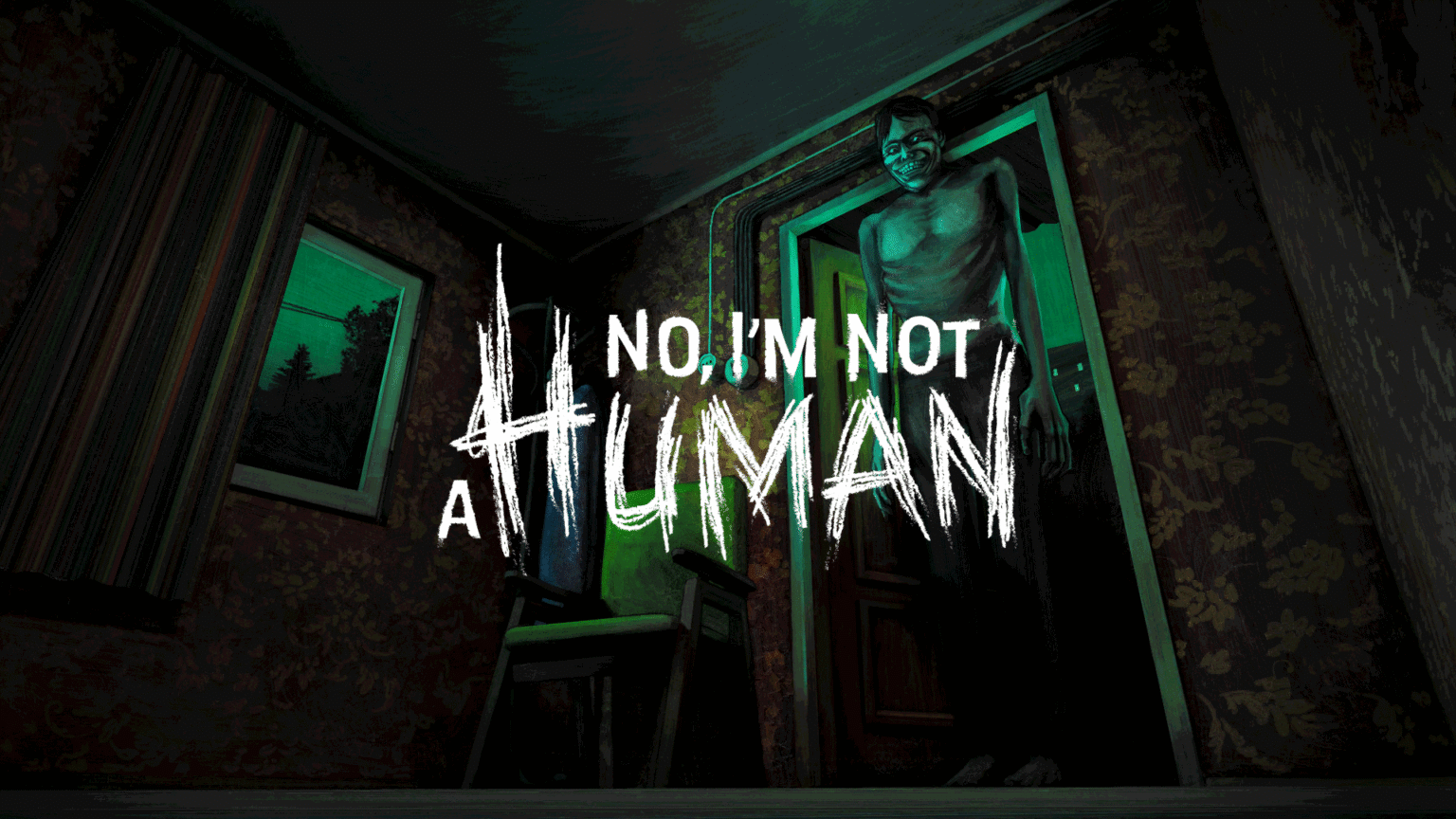Paranoia is one of the most powerful emotions in horror. It doesn’t take a jumpscare or a monster lurking in the dark to make your heart race—sometimes it’s the simple question of “can I trust them?” that does the job. No, I’m Not a Human, developed by Trioskaz and published by CRITICAL REFLEX, thrives on this exact feeling. It’s a horror game about isolation, trust, and the terrifying possibility that the person knocking on your door isn’t who they say they are. With its grim atmosphere, haunting soundtrack, and mechanics built around suspicion, it’s one of the most unique indie horrors of 2025.

The End of Days
The setting is bleak. The world has collapsed into ruin. Streets are filled with corpses charred into grotesque shapes, and even peeking outside risks burning your eyes. Daytime is death, but night isn’t salvation—it’s when the Visitors come. These strange entities wear human faces, mimic human voices, and knock at your door, begging to be let in.
You play as “The Hermit,” a man with a strained family past, who now lives alone in a fragile safehouse. Each evening, knocks echo through the silence. Do you open the door? Do you let them in? Or do you pull the trigger first?
The setup may sound like something pulled straight from Papers, Please or The Mandela Catalogue, but its execution is refreshingly personal. It isn’t just about surviving—it’s about weighing morality against fear, connection against risk, and paranoia against compassion.
A Test of Trust
At its core, No, I’m Not a Human is a roguelite visual novel with survival elements. Each night, you’ll be faced with visitors, and it’s up to you to determine whether they’re genuine humans seeking shelter or Visitors disguised as them. Clues can be subtle—a strange pause in their speech, a flicker of uncanny behavior, or a line of dialogue that doesn’t quite sit right.
If you’re wrong, you risk letting a monster into your home. If you’re right, you gain an ally, resources, and sometimes even comfort in your isolation. The mechanics are deliberately minimalist, relying heavily on dialogue, choice, and observation rather than flashy gameplay. The closest comparison is Papers, Please, though filtered through the lens of cosmic horror.
The real tension comes from the fact that isolation isn’t an option. You can’t just shut everyone out, because the Visitors will eventually overwhelm you. You need people—yet people might be the very threat you fear most.

Dread Done Right
If there’s one thing No, I’m Not a Human nails, it’s atmosphere. The art style is a perfect blend of unsettling realism and surreal horror, making each encounter feel both familiar and deeply uncanny. Characters are expressive, yet off in a way that makes you constantly doubt them.
The soundtrack deserves special mention. Haunting, heavy, and soaked in melancholy, it amplifies the suffocating dread of your situation. Several players have even said they’ve been listening to the OST outside of the game—it’s that effective.
The tone is consistent throughout: suffocating, hopeless, and anxiety-inducing. This isn’t a horror game that tries to scare you with loud noises; it burrows under your skin and makes you question every choice.
Replayability and Endings
The game boasts ten different endings, each shaped by the choices you make and the guests you choose to trust—or kill. Some endings lean toward hope, others toward despair, but all of them reinforce the paranoia at the heart of the game.
However, replayability is both a strength and a weakness in this regard. While multiple playthroughs reveal new character stories and perspectives, the heavy reliance on RNG (random number generation) can frustrate players. Sometimes you’ll go hours without seeing a specific character arc or being able to trigger the conditions for an ending. For completionists seeking 100%, this can quickly become a tedious task.
Still, the variability ensures that no two runs feel exactly the same. Even after three playthroughs, players report discovering entirely new dialogue, new fates for their guests, and fresh ways to meet their doom.
Strengths
- The atmosphere is unmatched. The dread, paranoia, and suffocating isolation are pitch-perfect.
- Characters feel alive. Each guest is distinct, with unique personalities and backstories that make decisions genuinely difficult.
- Haunting soundtrack. The music nails the eerie tone and lingers long after the credits roll.
- Multiple endings. Ten possible outcomes provide strong replay value for fans of branching narratives.
- Unique concept. The mix of roguelite mechanics, visual novel storytelling, and paranoia-driven horror stands out in a crowded indie scene.
Weaknesses
- RNG reliance. Unlocking all character stories or endings often comes down to chance, which can feel unfair.
- Bug issues. While the developer has patched some problems, players still report occasional bugs, including save frustrations.
- Limited gameplay depth. The tension is strong early on, but once you learn how to “spot” Visitors, the mechanics lose some edge.
- Short runtime. A single playthrough can be finished in 2–3 hours, making the $15 price tag feel steep to some.
No, I'm not a Human: No, I’m Not a Human is less about traditional horror and more about psychological unease. It thrives on paranoia, forcing players to second-guess themselves with every decision. While it may not have the deepest mechanics or the most polished execution, its atmosphere and concept are powerful enough to leave a lasting impression. This is a game that doesn’t just want to scare you—it wants to make you doubt, hesitate, and carry its questions with you long after you shut it off. If you’re looking for a polished, content-rich survival horror, you may walk away disappointed. But if you’re craving an unsettling, paranoia-driven experience that lingers in your mind, No, I’m Not a Human is worth the knock at your door. – ColdMoon


